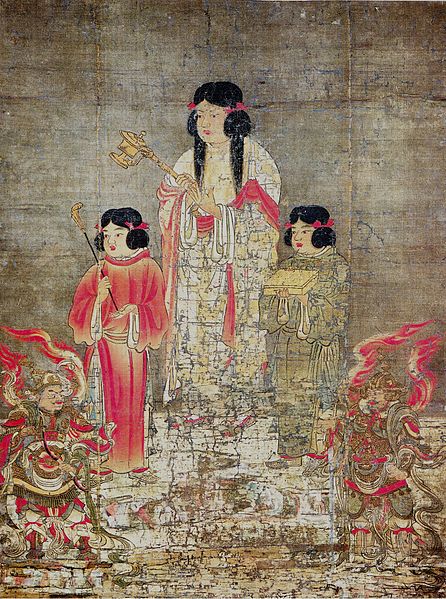Japanese literature throughout most of its history has been influenced by cultural contact with neighboring Asian literatures, most notably China and its literature. Early texts were often written in pure Classical Chinese or lit. 'Chinese writing' , a Chinese-Japanese creole language. Indian literature also had an influence through the spread of Buddhism in Japan.
Murasaki Shikibu, the author of The Tale of Genji
Matsuo Bashō, a haikai poet
Image: Mori Ogai in the atelier of Sculptor Takeishi Kozaburo in 1916
Image: Soseki
Buddhism in Japan was first established in the 6th century CE. Most of the Japanese Buddhists belong to new schools of Buddhism which were established in the Kamakura period (1185-1333). During the Edo (Tokugawa)-period (1603–1868), Buddhism was controlled by the feudal Shogunate. The Meiji-period (1868–1912) saw a strong response against Buddhism, with persecution and a forced separation between Buddhism and Shinto.
The Great Buddha (Amida) (Daibutsu) at Kōtoku-in, Kamakura, in Kanagawa Prefecture, Japan (National Treasure)
Painting on silk of the semi-legendary Prince Shōtoku, first major sponsor of Buddhism in Japan
The Great Buddha of Asuka-dera, oldest Buddha statue in Japan, and an example of the Tori style
The Yumedono Kannon, another example of Tori style








